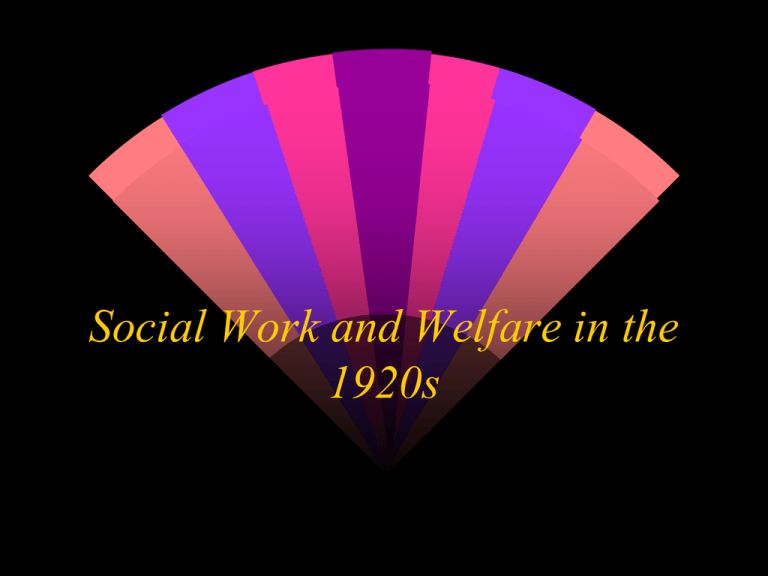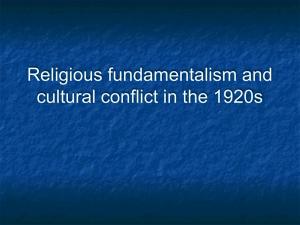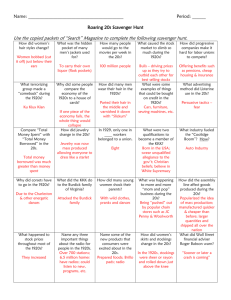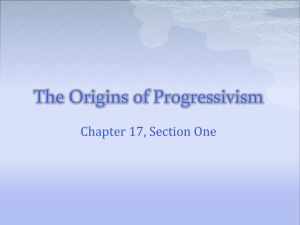16 Social Work and Welfare in the 1920s Trattner 12
advertisement

Social Work and Welfare in the 1920s Historical Background Americans in WW I from July 1917 until end in November 1918 4.8 million soldiers mobilized, 117, 000 killed and 204,000 wounded KKK founded in 1915 with 4.5 million members in mid 20s 1919 Constitutional amendment requiring prohibition ratified 1920 Constitutional amendment allowing women to vote ratified Consumer and Business Culture Buy, buy, buy – rise of advertising Speculation on the stock market Stock prices went up tremendously during the 1920s Lots of people were getting rich based on the value of their stocks and bonds Social Work Retreated from Social Reform Moved to consideration of ego strengths and weaknesses Casework became dominant Mary Richmond wrote Social Diagnosis (1917) Focus on investigation of individuals’ problems Based on medical model Trattner’s Comments on Social Diagnosis Not influenced by Freud Richmond believe casework was related to research and reform, but thought reform had failed She believed treatment was as important as diagnosis Social Diagnosis Response to Abraham Flexner Speech at 1915 National Conference said social work not yet a profession Response was that a technique was necessary “diagnosis” seemed professional Caseworkers employed by American Red Cross helped non-poor as well as poor Smith College Established psychiatric social work to work with mental patients Psychoanalysis becoming popularized in 1920s Freudian ideas gave theoretical base and scientific method Childhood experiences and emotions shape personality and behavior of adults Changed from Charity to Poor to Therapy Maladjustment problem with upper classes as well Increased status of profession Reduced reform and humanitarian thrust Poor seen as responsible for problems in “roaring 20s” Importance of Agency Admin and Fund Raising War chests developed to community chests Federated funding - forerunner to United Way Institutionalized anti-reform sentiments In the prosperity decade, many thought social reform was unnecessary Social Work’s Themes in the 20s Professionalism Psychiatry Psychoanalysis Also beginning to see family counseling, habit clinics, child guidance, adjustment problems Psychiatric social worker the ideal Social Work Education Included Freudian concepts such as defense mechanisms, transference, ego strengths, Oedipus complex Focus was on helping clients become adjusted to their environments, NOT on reforming ills of society Also it seemed like social workers were junior psychiatrists, not professionals on their own











